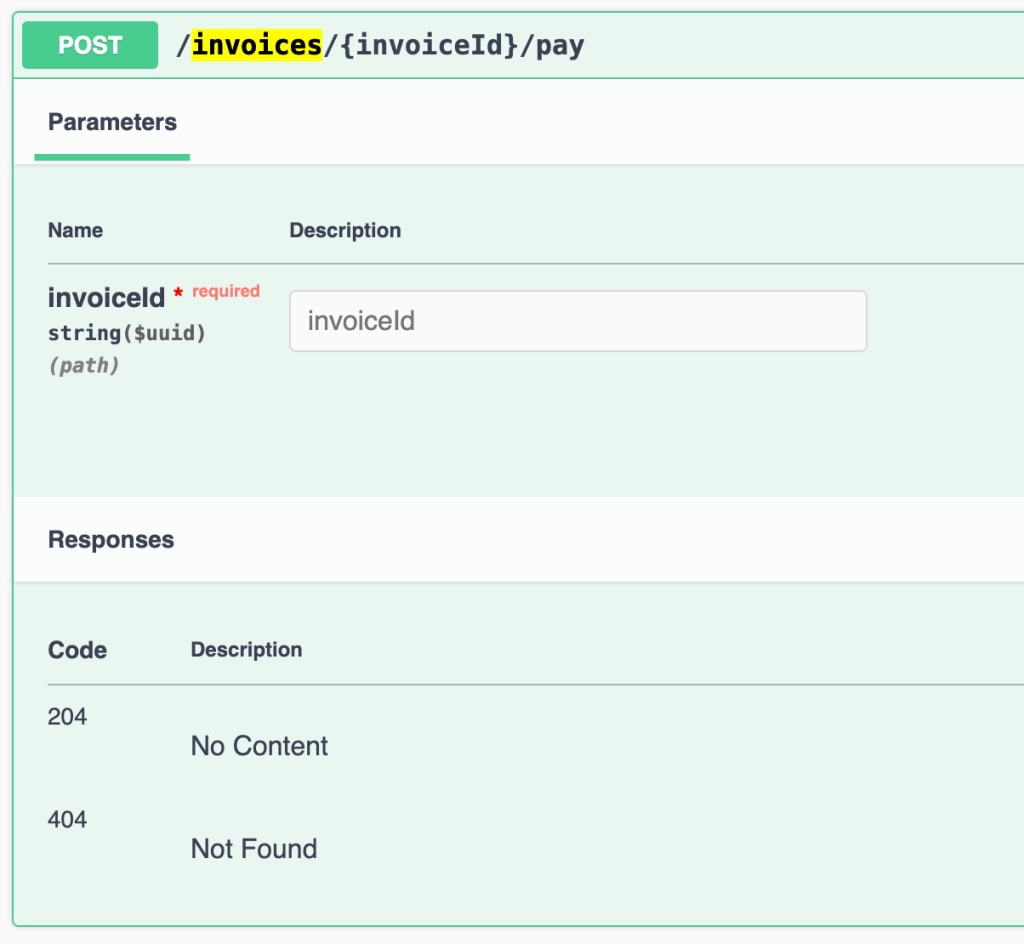Hey, did you know that JasperFx Software is ready for formal support plans for Marten and Wolverine? Not only are we trying to make the “Critter Stack” tools be viable long term options for your shop, we’re also interested in hearing your opinions about the tools and how they should change. We’re also certainly open to help you succeed with your software development projects on a consulting basis whether you’re using any part of the Critter Stack or any other .NET server side tooling. Reach us anytime at sales@jasperfx.net or on Discord!

I just published Wolverine 1.13.0 this evening with some significant improvements (see the release notes here). Beyond the normal scattering of bug fixes (and some significant improvements to the MQTT support in Wolverine for a JasperFx Software client who we’re helping build an IoT system), the main headline is that Wolverine does a substantially better job generating OpenAPI documentation for its HTTP endpoint model.
When I’m building web services of any kind I tend to lean very hard into doing integration testing with Alba, and because of that, I also tend not to use Swashbuckle or an equivalent tool very often during development and that has apparently been a blind spot for me in building Wolverine.HTTP so far. To play out a typical conversation I frequently have with other server side .NET developers talking about tooling for web services, I think:
- MVC Core by itself — but this is hugely acerbated by unfortunately popular prescriptive architectural patterns that organize code around
NounController/NounService/NounRepositorycode organization — can easily lead to unmaintainable code in bloated controller classes and plenty of work for software consultants who get brought in later to clean up after the system wildly outgrew the original team’s “Clean Architecture” approach - I’m not convinced that Minimal API is any better for larger applications
- The MVC Core controllers delegating to an inner “mediator” tool strategy may help divide the code into more maintainable code, but it adds what I think is an unacceptable level of extra code ceremony. Also acerbated by prescriptive architectures
- You should use Wolverine.HTTP! It’s much lower ceremony code than the “controllers + mediator” strategy, but still sets you up for a vertical slice architecture! And it integrates well with Marten or Wolverine messaging!
Other developers: This all sounds great! Pause. Hey, the web services with this thing seem to work just fine, but man, the Swashbuckle/NSwag/Angular client generation is all kinds of not good! I’m going back to “Wolverine as MediatR”.
To which I reply:

But no more of that after today because the Wolverine HTTP OpenAPI generation just took a huge leap forward after the 1.13 release!
Here’s a sample of what I mean. From the Wolverine.HTTP test suite, here’s an endpoint method that uses Marten to load an Invoice document, modify it, then save it:
[WolverinePost("/invoices/{invoiceId}/pay")]
public static IMartenOp Pay([Document] Invoice invoice)
{
invoice.Paid = true;
return MartenOps.Store(invoice);
}
The [Document] attribute tells Wolverine to load the Invoice from Marten, and part of its convention will match on the invoiceId route argument from the route pattern. That failed before in a couple ways:
- Swashbuckle can’t be convinced that the
Invoiceargument isn’t the request body - If you omit an
Guid invoiceIdargument from the route, Swashbuckle wasn’t seeinginvoiceIdas a route parameter and didn’t let you specify that in the Swashbuckle page. - Swashbuckle definitely didn’t get that
IMartenOpis a specialized Wolverine side effect that shouldn’t be used as the response body.
Now though, that endpoint looks like this in Swashbuckle:

Which is now correct and actually usable! (The 404 is valid because there’s a route argument and that status is returned if the Invoice referred to by the invoiceId route argument does not exist).
To call out some improvements for Wolverine.HTTP users, at least the Swashbuckle generation handles:
- Route arguments that are used by Wolverine, but not necessarily in the main method signature. So no stupid, unused
[FromRoute] string idmethod parameters - Querystring arguments are reflected in the Swashbuckle page
[FromHeader]arguments are reflected in Swashbuckle- HTTP endpoints that return some kind of tuple correctly show the response body if there is one — and that’s a commonly used and powerful capability of Wolverine’s HTTP endpoints that previously fouled up the OpenAPI generation
- The usage of
[EmptyResponse]correctly sets up the 204 status code behavior with no extraneous 200 or 404 status codes coming in by default - Ignoring method injected service parameters in the main method
For a little background, after getting plenty of helpful feedback from Wolverine users, I finally took some more serious time to go investigate the problems and root causes. After digging in much deeper to the AspNetCore and Swashbuckle internals, I came to the conclusion that the OpenAPI internals in AspNetCore are batshit crazy far too hard coded to MVC Core and that Wolverine absolutely had to have its own provider for generating OpenAPI documents off of its own semantic model. Fortunately, AspNetCore and Swashbuckle are both open source, so I could easily get to the source code to reverse engineer what they do under the covers (plus JetBrains Rider is a rock star at disassembling code on the fly). Wolverine.HTTP 1.13 now registers its own strategy for generating the OpenAPI documentation for Wolverine endpoints and keeps the built in MVC Core-centric strategy from applying to the same Wolverine endpoints.
I’m sure there will be other issues over time, but so far, this has addressed every known issue with our OpenAPI generation. I’m hoping this goes a long way toward removing impediments to more users adopting Wolverine.HTTP because as I’ve said before, I think the Wolverine model leads to much lower ceremony code, better testability over all, and potentially to significantly better maintainability of larger systems that today turn into huge messes with MVC Core.